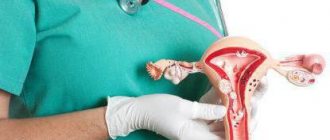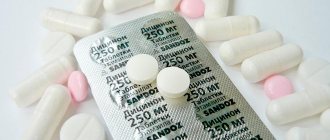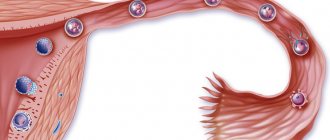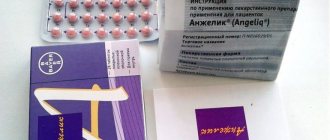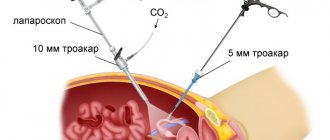What hormones need to be taken?
A screening (preliminary) examination of the thyroid gland includes only two indicators - T4 and TSH. For a more in-depth examination, other tests will be needed. Their combination may differ in childhood and during pregnancy.
For a child
Newborns in the maternity hospital are tested for TSH and T4 for early diagnosis of congenital hypothyroidism, which leads to mental retardation. If the mother had thyrotoxicosis during pregnancy, then the list of mandatory tests includes the determination of antibodies to TSH receptors. It shows the risk of autoimmune disorders, hyperthyroidism, Graves' disease.
For a man
If there are complaints of weight loss without dieting, general weakness, irritability, insomnia, hand tremors, intolerance to heat and bright light, hyperthyroidism is likely. Patients are shown the determination of: free fractions of T4, T3, TSH, antibodies to TSH receptors and tissue peroxidase.
If hypothyroidism is suspected in the subject (swelling, drowsiness, fatigue, obesity, constipation), then antibodies to thyrotropin receptors are not tested. When treatment has already been prescribed, only T4 and TSH are monitored.
For woman
During pregnancy, the mandatory list of tests is: TSH, T3 and T4, antibodies to tissue peroxidase
If autoimmune thyroiditis is suspected, it is important to undergo a study of antibodies to thyroid hormones, thyroglobulin and colloid antigen, and thyrocyte microsomes. In any other situations, the set of tests for men and women is no different
Watch the video about preparing for thyroid hormone tests:
Evaluation of results
The analysis results are assessed separately for each hormone. Elevated thyroxine levels are typical for:
- Thyroiditis;
- Diffuse toxic goiter;
- Obesity;
- Renal pathology;
- Gland adenomas;
- TSH-independent thyrotoxicosis.
A decrease in thyroxine concentration is observed in the following conditions:
- Lead poisoning;
- Primary and secondary thyroiditis;
- Opiate addiction;
- Long-term use of tablet contraceptives;
- Oncological diseases of the thyroid gland;
- Iodine deficiency;
- Exhaustion.
Increased amounts of thyrotropin occur in pregnant women with preeclampsia. In addition, intoxication with thyroid-stimulating hormones occurs when:
- Syndrome of uncontrolled TSH synthesis;
- Hormone-synthesizing lung tumors;
- Pituitary tumors;
- All conditions characterized by a decrease in T
A decrease in TSH levels is possible with the following diseases:
- Hyperthyroidism in pregnant women;
- Mental disorders;
- Thyrotoxic adenoma;
- Diseases accompanied by increased levels of thyroxine;
- Thyroiditis of autoimmune nature.
The results of an analysis of thyroid hormones suggest the presence of one or another pathological process. However, they cannot be the only basis for diagnosis. To reliably determine the causes of hormonal imbalance, the patient is prescribed additional types of tests: clinical and biochemical blood tests, ultrasound, CT or MRI of the brain, and radiography.
If a pathology of the pituitary gland is suspected, accompanied by a decrease or increase in TSH levels, the patient is prescribed a targeted analysis for hormones such as somatotropin, prolactin, and oxytocin. When these indicators go beyond the normal range, experts assume the presence of organic or functional disorders in the functioning of this organ. Differential diagnosis is carried out using MRI.
Types, causes and symptoms of hypothyroidism
If we talk about the classification of pathological processes occurring in the thyroid gland, then it is carried out taking into account the primary causes that led to disruption of the organ. Primary hypothyroidism refers to diseases associated with pathologies of the endocrine gland itself.
This should include:
Primary hypothyroidism refers to diseases associated with pathologies of the endocrine gland itself. This should include:
- disorders in the process of formation and development of the thyroid gland of a congenital nature;
- existing genetic abnormalities;
- development of inflammatory and autoimmune processes in the endocrine gland;
- lack of iodine in the body.
Experts call secondary hypothyroidism a disorder caused by damage to the pituitary gland, as a result of which the latter stops producing the hormone TSH. Such lesions of the pituitary gland include:
- congenital underdevelopment of the organ;
- suffered brain injuries that led to damage to the pituitary gland;
- extensive bleeding;
- malignant formations in the pituitary gland;
- brain infections.
As for the symptoms of the disease, at the initial stage of its development general signs of pathology appear:
- state of lethargy and drowsiness;
- apathy;
- weakened memory;
- the occurrence of constipation, which is associated with a decrease in the sensitivity of the smooth muscle tissue of the digestive system to stimulating signals of the nervous system;
- with hypothyroidism, there is a decrease in libido;
- Women experience menstrual irregularities.
Suspicions of hypothyroidism may also arise if changes in the functioning of the central nervous system are observed, as a result of which:
- a person experiences sleep disturbance at night and a state of drowsiness during the daytime;
- intellectual abilities and memory decrease;
- a depressive state develops;
- reflexes decrease.
Pathologies leading to changes in the level of thyroid-stimulating hormone
Having figured out what TSH, T3 and T4 are and their relationship, and most importantly - how to get tested so that the test is followed by adequate treatment, the woman listens to her diagnosis. There are several dangerous pathologies:
- Autoimmune thyroiditis. This disease is characterized by the production of antibodies to thyroid cells and, accordingly, to TSH.
- Thyroiditis. The thyroid gland is also to blame for this disease. She is very inflamed.
- The decipherable pathology may be caused by a banal injury to the thyroid gland.
- During hormone tests, the level of iodine in the blood is assessed, because often a deficiency of this substance leads to low production of T3 and T4.
- The test must be taken in case of chronic renal failure or pathologies of the adrenal glands.
- Thyrotropinoma. Often the person taking the test does not suspect that he has a benign tumor in the pituitary gland. This diagnosis usually continues with complex surgery.
- Low levels of testosterone in a man's blood can be caused by a disorder of thyroid-stimulating hormone, which in turn has been disrupted by stress, infection, heavy physical labor, or old age.
- In hypophysitis, immune system cells destroy pituitary cells.
- The pituitary gland can become a victim of physical trauma from a blow or a fall; the hormone will return to normal only after recovery.
- Brain tumors occur in different locations, including the hypothalamus. In this case, compression on the brain tissue comes precisely from the neoplasm and puts pressure on the pituitary gland.
If you suspect the functioning of the endocrine system, you should consult a doctor. He will tell you how best to prepare for the analysis. Should you take it on an empty stomach or not, and on what day. The result is deciphered only by a specialist. TSH as a trace element is very important for the whole body. Therefore, it is recommended to take it not only in case of illness, but also as a preventive measure.
SUV2014: TTG Labs
SUV2014: TTG Labs
Procedure and research method
The study is carried out using the immunochemiluminescent method. During it, the laboratory technician determines the presence and concentration of thyroid-stimulating hormone in the venous blood. TSH is also accompanied by testing for the hormone T4. Of clinical importance are mainly free forms of hormones that are not bound to plasma proteins.
The blood sampling itself for hormones is no different from that for other research methods. The patient is seated on a chair, a cushion is placed under the elbow, after which they are asked to work with their fist for a few seconds and a vein in the elbow is punctured.
To test for TSH, 8-10 ml of venous blood is required, collected in a biochemical test tube. The latter is signed and sent for research. The puncture site is clamped with cotton wool or sealed with adhesive tape.
Survey
The purpose of the examination is to determine the level of thyroid hormones and diagnose the underlying disease. The primary examination is prescribed by the doctor whom the patient consulted. This is usually a blood test for free T4 and TSH. If a deviation is detected, then the endocrinologist prescribes further tests.
It is customary to examine total and free T4. The determination of T3 is not essential in diagnosis, so it is rarely studied. It is also necessary to conduct a TSH test. This is a thyroid-stimulating hormone that is produced in the pituitary gland. Its increase leads to stimulation of hormone synthesis in the thyroid gland.
If the amount of hormones in the blood decreases, the amount of TSH increases. With a large amount of thyroxine in the blood, the TSH value decreases. That is, they work on the “feedback” principle.
If hypothyroidism is suspected, TSH determination must be carried out. With latent, or subclinical, hypothyroidism, the amount of thyroxine in the blood is normal or at the lower limit of normal, and TSH already becomes high. That is, it stimulates the thyroid gland to work actively. Therefore, there are never any signs at the onset of the disease. But then the thyroid gland becomes depleted, which leads to the appearance of a vivid clinical picture.
For hypothyroidism, test results should be as follows:
T4 is below normal (normal total T4 is 58-161 nmol/l, free T4 is 10.3-24.5). TSH is higher than normal (normal TSH is 0.4 - 4 µIU/ml).
You should also donate blood for antibodies to thyroid peroxidase. Normally, their value should be less than 35 IU/ml. If the examination results are higher, this indicates the presence of an autoimmune process directed against the thyroid tissue. In such cases, the patient's main diagnosis is chronic autoimmune thyroiditis (AIT).
Why is TSH low?
A decrease in TSH concentration in the blood may indicate:
• Deterioration of the pituitary gland function – after brain injuries, with hereditary diseases, infections, after severe bleeding;
• Hypothyroidism is a deterioration in the normal functioning and function of the thyroid gland, which may be associated with a tumor, iodine deficiency, protein deficiency, heredity, exposure to radiation and other reasons;
• Psychological stress;
• Abuse of thyroid hormones;
• Sheehan syndrome – partial death of cells in the pituitary gland in women after childbirth.
How to prepare for analysis
In order for the research data to be reliable, the patient should refrain from smoking, drinking alcohol and heavy physical activity the day before. You should not indulge in fatty or spicy foods a day or two before your blood test. It is better to try to be in emotional balance at this time, since even minor stress can affect the results.
If the patient is already taking hormonal pills or, on the contrary, drugs that inhibit the production of hormones, the doctor will advise you to stop using them for 2 weeks before the test. If the attending physician did not consider it necessary to warn about this, then hormones should be taken according to the usual schedule.
Before a blood test, you should be careful when taking vitamin complexes and iodine preparations. The fact is that iodine has a direct effect on the functioning of the thyroid gland, because of this, the results of the study may be distorted.
Study of prolactin and sex hormones
Prolactin and sex hormones (estrogens, androgens, gonadotropins) are sensitive to sexual stimuli. It is advisable to abstain from sexual intercourse on the eve of the study.
In women, hormone levels are closely related to the day of the reproductive cycle. Estradiol, testosterone, follicle-stimulating hormone, luteinizing hormone are usually advised to be taken 6-7 days after the start of menstruation. Progesterone is recommended to be tested on days 22–23 of the cycle.
Prolactin can be determined on any day of the month. The day before testing for this hormone, you should limit thermal procedures (bath, sauna, hot shower).
Tests for sex hormones
Male and female sex steroids are androgens, estrogens, gestagens. These hormones determine the structure of the internal and external reproductive organs, fertility, libido, physique, facial and body hair growth, metabolism, etc. Sex hormones are produced under the control of the hypothalamic-pituitary region. The gonadotropins LH and FSH (luteotropin, follitropin) influence the ovaries and testicles.
In children, menopausal women, and men, LH and FSH levels are relatively stable. They also secrete sex steroids in approximately the same volumes. Therefore, they can do a blood test for sex hormones any day.
In women of reproductive age, LH and FSH are synthesized with a certain rhythm. Indicators vary greatly throughout the month. It is these vibrations that set the cyclical functioning of the entire reproductive system. Due to the effects of different doses of FSH and LH per month, a woman experiences follicle maturation, ovulation, proliferation and secretion of the endometrium, and menstruation. All these processes support fertility and are accompanied by changes in the concentration of androgens, estrogens, and gestagens in the blood. Therefore, all women with a preserved menstrual cycle must take sex hormones on certain days. The gynecologist recommends specific dates.
Unless otherwise prescribed, then:
- testosterone is given in the follicular phase (on days 2-5 or 2-7 of the cycle);
- 17-OH progesterone – from 3 to 5 days;
- FSH and LH – on days 2-7;
- LH to detect ovulation - every day 18-8 days before the expected date of the next menstruation;
- estradiol – on days 2-7;
- progesterone - in the luteinizing phase (on days 22-23).
If a woman has menstrual irregularities (amenorrhea), tests can be taken any day.
Prolactin level test
Prolactin is one of the tropic hormones of the pituitary gland. It determines the functioning of the reproductive system, affects lactation, increases body weight, and affects the state of the central nervous system. Hormone testing is prescribed by gynecologists, urologists, and endocrinologists. Prolactin levels vary greatly depending on the psychological state. Physical factors also influence the concentration of the hormone.
To properly prepare for the study:
- refuse thermal procedures the day before the analysis;
- avoid tight underwear that affects the mammary gland area;
- abstain from sexual activity the day before;
- try to get a good night's sleep.
On the day of diagnosis, go to the laboratory a little earlier than the appointed time. Rest in front of the office for 15-20 minutes. And only after that, go get tested. At the time of blood sampling, it is advisable not to worry (if you react emotionally, try to be distracted by some pleasant thoughts).
The role of the hormone TSH
A referral for a TSH test is usually given by an endocrinologist. The material for the study is blood serum; for this it is necessary to take samples from a vein. To conduct the study, the method of immunochemiluminescent analysis is used.
Advice! As a rule, simultaneously with the TSH test, a test is carried out for hormones produced in the thyroid gland - T3 and T4. Such a comprehensive examination allows you to get a detailed picture and make an accurate diagnosis.
Thyroid-stimulating hormone plays an important role in human life. Thanks to this substance, hormones are produced that regulate basic metabolic processes in the body, controlling the functions of the cardiovascular and reproductive systems. Mental state depends on the balance of these hormones.
Advice! If the level of thyroid hormones is significantly increased, a person becomes hot-tempered, irritable, and cannot control his emotions.
What do hormone levels depend on? This indicator is influenced by many factors, including the gender and age of the patient. Thus, the norms for women, especially during pregnancy, differ significantly from the optimal indicators adopted for men and children.
Symptoms of increased thyroid-stimulating hormone levels
A blood test for hormones is taken when a person develops the following symptoms:
- Excess weight caused by retention of fatty tissue in the body.
- The appearance of swelling on the eyelids, tongue, hands and feet.
- An abnormal TSH level leads to a slowdown in metabolism and, as a consequence, to the appearance of chills.
- People with chronic muscle weakness and fatigue should take a TSH test
- Hormonal imbalances often lead to disturbances in a person’s psychological state – depression, sleep disturbances, nervousness and anxiety.
- The number of heartbeats per minute is reduced to 55 beats.
- Hormone readings are assessed for increased dry skin, hair loss, and thinning nails.
- Disruption of the thyroid gland, TSH deficiency, is accompanied by disruptions in the gastrointestinal tract. This is expressed in the appearance of constipation, enlarged liver, and a chronic feeling of heaviness in the intestines and stomach.
- And the most important symptom is any deviation from the established regularity of the menstrual cycle.
Since the most dangerous cause of hormone imbalance is pituitary adenoma, you should pay attention to the manifestations of this pathology:
- Severe headache localized in the temporal lobe of the brain.
- Sudden deterioration of vision.
- The patient loses the ability to distinguish colors.
- Lost peripheral vision.
- The appearance of dark spots in the visibility zone.
When is it necessary to get tested?
The determination of thyroid-stimulating hormones is not part of the routine examination, which is carried out for most patients for any disease. Therefore, tests for TSH and T4 concentrations can only be done for a fee or for certain indications. These include:
- Child's delay in physical or mental development;
- Frequent disruptions of the menstrual cycle in women;
- Causeless arrhythmias;
- Signs of thyrotoxic goiter;
- Alopecia at a young age;
- Infertility or frigidity;
- Impotence without organic causes.
In addition to the above, a TSH test is taken if there are indirect signs of hypo- or hyperthyroidism. Insufficient levels of hormones are indicated by dry skin, constipation, low blood pressure, persistent obesity, weakness, deterioration of reaction and intelligence.
Note: Situations where it is necessary to take tests for TSH and T4 include algodysmenorrhea - painful menstruation. This phenomenon is widespread today among girls aged 15 to 30 years.
An excessively high level of TSH or T4 can be suspected if a person experiences weight loss due to normal or increased nutrition, mental agitation, or an unreasonable chronic increase in body temperature. An undeniable sign of hyperthyroidism is an enlarged thyroid gland and exophthalmos (bulging eyes). In this case, an analysis for TSH, T4 and T3 is required.
Symptoms of hypothyroidism
The clinical picture depends on the severity of hypothyroidism, that is, on how much hormone levels have decreased. Also, some patients complain more about the heart, others about the digestive tract.
Many girls have their thyroid gland examined because they have not been pregnant for a long time. But upon careful questioning of the patient and collection of anamnesis, one can notice that all complaints occur in one person, they just have different degrees of severity. Mostly complaints appear about:
Memory deterioration, decreased performance, constant drowsiness during the day. The motor reaction slows down, and emotions become very scarce. These are signs of disorders of the nervous system.
Heart rhythm disturbances, shortness of breath, low blood pressure and bradycardia always occur with hypothyroidism
More often, mature people who are accustomed to controlling their blood pressure and heart rate pay attention to this.
Changes in digestion. The main complaint is constipation. Also, many patients note a decrease in appetite, heaviness in the stomach after eating, and belching.
Weight gain. This symptom appears due to fluid retention in the intercellular space. Also affects the slowing of metabolism, which always occurs with hypothyroidism. Decreased sexual desire and infertility are common signs of hypothyroidism in young people. Change in appearance. The skin becomes dry, hair and eyelashes fall out, and nails quickly break.
The face swells and becomes rounded
Girls and women pay more attention to this
Hypothyroidism in men occurs with the same symptoms, but they rarely consult a doctor right away. But when impotence or infertility occurs, men begin to be examined. A knowledgeable urologist does not forget about possible problems with the thyroid gland and refers patients for tests. Decreased endurance in men, shortness of breath during sports exercises or when lifting heavy objects are also reasons to consult a doctor.
Sometimes hypothyroidism is asymptomatic or with few symptoms. The patient does not show any significant complaints. This condition is most dangerous for women planning pregnancy. In this case, the egg can mature and fertilization will occur. But the body is not ready to carry a pregnancy, which leads to miscarriage.
Also, hypothyroidism in a pregnant woman can lead to disruption of the development of the central nervous system. A child is born with incorrigible abnormalities that could be prevented with timely treatment.
Treatment of hypothyroidism with folk remedies
Treatment of hypothyroidism involves the use of levothyroxine hormone replacement therapy. This is a synthetic hormone, similar in structure to thyroid hormones. It has the ability to bind to thyroxine receptors, so it has the same effect. The patient's condition improves at the beginning of treatment.
Shortness of breath goes away, weight decreases, heart rhythm normalizes, complaints from the digestive tract disappear. Girls' menstrual cycle is restored and the ability to conceive appears.
Hypothyroidism should not be treated without hormone therapy, because only medications can restore hormone levels. They must be taken throughout your life. But together with traditional medicine methods, you can use folk remedies to treat hypothyroidism.
Popular recipes are:
Powder made from dried seaweed is infused in the proportion of 1 teaspoon per glass of boiling water. Take twice a day for one month. Medicinal herbs help in the fight against hypothyroidism. They use celandine grass, dill fruits, elecampane root, and cocklebur fruits.
Mix in equal proportions, take 2 tablespoons of the mixture, and infuse in 0.5 liters of boiling water. Take half a glass three times a day for a long time. To treat hypothyroidism, use a mixture of boiled garlic 50 g, walnuts 150 g, dill seeds 5 tablespoons and 500 g. honey All components are mixed and left overnight in the refrigerator. Take half an hour before meals, a tablespoon three times a day.
Traditional medicine can be combined with medications, but they cannot replace hormonal therapy. Combination treatment will help quickly eliminate the symptoms of the disease. You must regularly take control tests to confirm the effectiveness of the treatment. Hypothyroidism, detected at the onset of the disease, is well compensated, and patients begin to lead their previous lifestyle. But you need to take hormones in the morning every day, then everything will be fine.
Author of the article: endocrinologist Ekaterina Monakova
Treatment of hypothyroidism and thyrotoxicosis
Overt hypothyroidism should always be treated. You will be prescribed thyroid hormone replacement therapy, levothyroxine, which you will need to take for life.
Subclinical hypothyroidism in most cases does not require treatment; tests must be repeated after 3–6 months. The exception is pregnancy, as well as a pronounced increase in cholesterol (> 7 mmol/l). In these cases, even with subclinical hypothyroidism, thyroxine replacement therapy is prescribed.
Manifest (overt) thyrotoxicosis almost always requires treatment. At first I wrote “always,” then, to be fair, I decided to add that there are rare forms that go away on their own. However, thyrotoxicosis always requires consultation with a doctor and observation.
Subclinical thyrotoxicosis does not require treatment, but tests must be repeated after 6 months, there is a possibility of transition to an expanded form.
Which indicator is already dangerous?
When handing out a blood test form for hypothyroidism, there are various options shown in the table.
| Form of hypothyroidism | Hormone levels |
| Subclinical variant, when there are no obvious signs of disease | TSH is elevated; |
| T3 and T4 are normal | |
| Primary | TSH is 10 times higher than normal; |
| T4 content is reduced | |
| Secondary | TSH – normal amount; |
| free T4 is reduced | |
| Manifest form | TSH rises above the upper limit of normal, i.e. > 4.0 mU/l; |
| T3 t T4 decreased |
High levels of TSH are detected in hypothyroidism also of postoperative origin. If the indicator rises during the course of treatment, it is necessary to increase the dose of the replacement hormone.
Sometimes an increase in thyroid-stimulating hormone signals the development of Hashimoto's disease. In rare cases, an increase in TSH is caused by a pituitary tumor.
TSH levels increase after gallbladder removal surgery. Taking β-blockers, antipsychotics, and iodides also leads to an increase in the rate.
Consequences of hypothyroidism
With a lack of thyroid hormones, blood vessels and the heart suffer, and ovarian function deteriorates. This leads to the following consequences:
- osteoporosis – bones become brittle;
- legs become swollen due to edema;
- puffy face;
- heart function deteriorates, which is manifested by arrhythmia, bradycardia;
- breathing becomes difficult.
With reduced thyroid function, the endocrinologist prescribes lifelong use of artificial substitutes for the hormone thyroxine.
What functions do thyroid hormones and TSH perform?
Thyroid-stimulating hormone is synthesized by the pituitary gland, a structural element of the brain. It is a regulatory substance under the influence of which the production of hormones T3 and T4 occurs. In addition, the TSH hormone takes part in the synthesis of proteins and phospholipids and is responsible for the supply of iodine from plasma to thyrocytes (thyroid cells).
The concentration of thyrotropin in the blood directly depends on the level of thyroid hormones. The less of them is present in biological fluids, the more TSH is produced by the pituitary gland. With an increase in the concentration of T3 and T4, the volume of synthesized thyroid-stimulating hormone naturally decreases, which again leads to an increase in the amount of thyroid substances.
The following indicators of the amount of the hormone TSH are allowed:
- Adults and children over 14 years old - 0.4-4 mU/l;
- Pregnant women - 0.2-2.5 mU;
- Children under 14 years old - 0.4-5.8 honey.
T4 (thyroxine) is formed from iodine and amino acids in the cells of the thyroid gland. It has a catabolic effect, promoting the breakdown of glycogen and fats with the release of energy. It is present in the blood in free and bound forms. The normal concentration of thyroxine is:
- free - 9-22 picomoles per liter;
- total - 1.2-2.5 nanomoles per liter.
T3 (triiodothyronine) - stimulates the formation of proteins, regulates oxygen consumption by tissues. It is mainly formed from thyroxine by deiodination of the latter. Produced in small quantities by thyrocytes. The following indicators are considered normal:
- free - 2.62-5.77 nmol/l;
- general - 1.06-3.14 nmol/l.
The concentration of triiodothyronine, like other thyroid hormones, can vary significantly throughout the day.
Symptoms of low thyroid-stimulating hormone levels
Signs of low TSH levels include the following:
Losing weight by a person means increased metabolism. The appearance of a large lump on the throat is a goiter. High temperature, around 37 degrees. High appetite, accompanied by frequent bowel movements. Increased heart rate, which also increases blood pressure in the arteries. Violation of calcium metabolism in bones and teeth leads to their fragility and fragility. If the microelement is not normal, the person is susceptible to the development of neurasthenia
His attention is scattered, he is full of fears and phobias. A person experiences an unpleasant feeling of “sand in the eyes”, due to which his eyes acquire a characteristic wideness. The skin takes on a yellow tint, becomes moist and thin. The patient may fall while walking, as his muscles are extremely weak and get tired quickly.
Interpretation of research results
TSH in hypothyroidism closely interacts with the hormones T3 and T4. When the production of thyroid-stimulating hormone by the pituitary gland is reduced, the thyroid gland does not sufficiently synthesize its own secretions T3 and T4.
Low TSH occurs with central hypothyroidism. When damaged during a stroke, the hypothalamus does not produce the hormone and therefore cannot stimulate the pituitary gland.
Therefore, in secondary hypothyroidism, TSH is low or normal, and the thyroid gland produces reduced amounts of T3 and T4. Low TSH with normal T4 occurs in or in older people.
Tests for T3 hormones have no diagnostic value for hypothyroidism, since the indicator remains normal even with a severe form of the disease. This is due to the fact that TSH primarily stimulates the production of triiodothyronine T3.
Tests show low levels of total and free thyroxine T4 in hypothyroidism. In the initial stage, the TSH level is elevated, and free T4 remains within normal limits. The ratio of indicators is the opposite.
To obtain reliable data, tests are done several times to eliminate laboratory error.
Norms for TSH
It is important to remember that TSH fluctuations are especially individual for each person at different ages.
Therefore, an accurate interpretation of TSH tests (resolving the issue of whether TSH is low or increased) should only be carried out by a medical specialist. On average, the norm for TSH levels in adults is 0.23-4.90 mIU/l. For children aged 7-12 years, the TSH norm, on average, is in the range of 0.61-5.20 mU/l. For children under 6 years of age, the TSH norm ranges from 0.45-3.6 mU/l.
The average value and norm of TSH during pregnancy is 0.2-3.5 mU/l. In pregnant women, during some periods, it is considered normal when the TSH level is elevated to 5.6 mU/L.
Preparing and conducting analysis
A therapist or endocrinologist can prescribe a blood test for thyroid-stimulating hormone.
Indications for this will be:
- presence of goiter;
- suspicion of hyper- or hypothyroidism;
- infertility;
- miscarriage;
- problems with potency;
- use of hormonal drugs;
- heart problems;
- decrease in body temperature of unknown etiology;
- myopathy;
- changes in emotional background, irritability or depression;
- baldness in men or women;
- Male pattern hair growth in women:
- disorders of intellectual or sexual development in a child.
During pregnancy, for preventive purposes, this analysis is always present in routine checks.
Before taking blood for testing for thyroid-stimulating hormone, total T3 and total T4, as well as free T3 and free T4, certain preparation is desirable.
2-3 days before the tests you should not take iodine-based medications, you should quit smoking, alcohol and try to avoid physical and emotional stress.
A blood test for thyroid-stimulating hormone must be taken on an empty stomach, so preparation for the procedure includes a short fast - you cannot eat anything 8-12 hours before taking the test.
When taking hormonal medications, in order to properly prepare for the procedure, you need to consult a doctor. For the purity of the results, it is recommended to stop taking such drugs a month before the study.
It is important for women to know that tests for total T3, total T4, thyroid-stimulating hormone, free T3 or free T4 can be taken on any day of the cycle. This means that data decoding does not depend on whether menstruation is currently underway or has already ended
This means that the decoding of data does not depend on whether menstruation is currently underway or has already ended.
To test for thyroid-stimulating hormone, blood is taken from a vein. To examine samples, radioimmunoassay (RIA) or enzyme-linked immunosorbent assay (ELISA) is used.
When studied using different methods, the norm indicators will change slightly. In a regular clinic, the enzyme immunoassay method is more often used.
Preparing for a TSH test
Preparation for a blood test for thyroid hormones begins a month before the procedure and includes restrictions on taking certain medications and foods, and lifestyle adjustments.
Taking medications
Some medications that the patient takes can affect the concentration of hormones. Such drugs include:
- hormonal drugs (prednisolone, hydrocortisone, oral contraceptives);
- Iodine-containing preparations (iodine-active);
- Loop diuretics (furosemide, Lasix);
- Salicylates (aspirin, paracetamol);
- Sedatives (relanium, phenozepam).
Before testing for TSH, T4 and T3, you should stop taking medications that can affect the levels of thyrotropin and thyroxine. The possibility of this should be assessed by the attending physician. If it is impossible to stop treatment, the medications are continued. The laboratory where the biomaterial will be collected should be notified about this.
Note: if, in addition to a blood test, the patient is prescribed an X-ray contrast examination of the thyroid gland, it is carried out after the collection of biomaterials. Otherwise, the introduced contrast will make the results of the laboratory examination incorrect.
Lifestyle correction and menstrual cycle timing
Preparation for analysis requires abandoning activities that are accompanied by significant psycho-emotional stress. Stress and anxiety that can reduce the production of thyroid substances should be avoided. In addition, 15-20 days before blood sampling for TSH, you must abandon all types of physical training.
Directly in the laboratory, the patient is asked to sit quietly in a chair, read a book or listen to music for 30-60 minutes. This allows you to stabilize your mental state and relieve the anxiety typical of people preparing for medical manipulation. You cannot take sedatives for this purpose.
When preparing for an analysis, women have questions about which day of their cycle they should visit the laboratory. In reality, the menstrual cycle does not have a significant effect on the level of TSH and thyroid hormones. You can take the test at any time.
Diet
A person donating blood for hormones should not drink alcohol for 3 days before visiting a healthcare facility. It is also recommended to quit smoking during this period. Ethyl alcohol and substances contained in tobacco smoke reduce TSH secretion.
Food should be taken no later than twelve hours before blood sampling. It is better if a person, after having dinner in the evening, does not drink anything other than water during the night and morning before the study. It is recommended to donate blood between 8 and 10 am.
Decoding the results
The norm of indicators differs in different laboratories, so it is recommended to conduct studies in one institution. Acceptable values are indicated on the form. An increase or decrease in hormone concentrations beyond acceptable limits is a sign of thyroid dysfunction. To confirm the diagnosis, it is necessary to consult an endocrinologist.
If a blood test for TSH reveals an excess of T3 and T4, and thyroid-stimulating hormones are low, this indicates the development of thyrotoxicosis. Patients complain of the following symptoms:
- increased irritability;
- fever, heavy sweating;
- hand tremors;
- disruption of the heart.
If, against the background of low TSH, the level of T3 and T4 is high, this is obvious hypothyroidism, and a decrease in thyroid hormone levels indicates a latent (subclinical) form of the disease. Low TSH in pregnant women is not a pathology.
When hormone levels are low, hypothyroidism develops and thyroid function decreases. Characteristic signs of pathology are:
- apathy, lethargy;
- increased fatigue, drowsiness;
- swelling;
- severe hair loss, brittle nails;
- chilliness;
- menstrual irregularities in women;
- deterioration of potency in men.
An increase in total T4 indicates inflammation of the thyroid gland, tumor formation, diffuse goiter, and tissue resistance to thyroxine. To confirm the diagnosis, several studies are carried out, and additional diagnostic methods are prescribed.
Bibliography
- Dreval, A.V. Thyroid diseases and pregnancy / A.V. Dreval, T.P. Shestakova, O.A. Nechaeva. - L.: Medicine, 2007. - 625 p.
- Diseases of the thyroid gland in women of reproductive age. Guide for doctors. - M.: GEOTAR-Media, 2013. - 487 p.
- Ivanova, V. Thyroid diseases and diabetes / V. Ivanova. - M.: Newspaper world, 2013. - 128 p.
- Kazmin, V.D. Diseases of the thyroid and parathyroid glands / V.D. Kazmin. - M.: Phoenix, 2009. - 256 p.
- Petunina, N. A. Diseases of the thyroid gland: monograph. / ON THE. Petunina, L.V. Trukhina. - M.: GEOTAR-Media, 2011. - 222 p.
- Pinsky, S.B. Diagnosis of thyroid diseases / S.B. Pinsky, A.P. Kalinin, V.A. Beloborodov. - L.: Medicine, 2005. - 192 p.
Factors influencing the synthesis of thyroid hormones
Hormone levels fluctuate depending on the time of day. Research results indicate that the maximum concentration of TSH is observed between 2 and 4 am. The minimum amount of TSH is found in the blood around 5-7 pm.
A natural decrease in the concentration of thyroid and pituitary products is observed in women in the first and second trimester of pregnancy. Typically, a TSH analysis shows normalization of this indicator by the beginning of the 3rd trimester. Sometimes low hormone levels persist throughout the entire period of fetal development. The amount of thyrotropin naturally decreases in old age.
In children, there is a slightly increased concentration of the hormone TSH in the blood relative to an adult. This is due to the active processes of growth and muscle mass gain. That is why the upper limits of reference values in childhood are overestimated. The amount of hormones reaches the levels characteristic of an adult after 14-15 years, when the growth rate decreases somewhat and body weight stops increasing so quickly.
